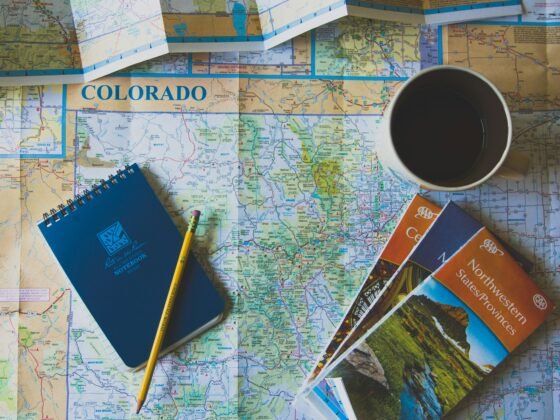Planning a holiday can be a lot of fun – you research places to go, local food to eat, sightseeing spots you can’t miss and comfortable places to stay. But when it comes to booking the flights that get you there and back, the process can verge on stressful.
For most people, there’s a natural desire to get whatever the cheapest deal is, thereby leaving more money in the bank to spend on having fun while you’re away. But with flight prices fluctuating by the day, and so much debate about the ideal time to book, how can you be sure you’re making the best choice?
If you’re preparing to book your next big trip and want to ensure you don’t pay over the odds, here are a few crucial steps to take before you set anything in stone.
1. Check international prices
Though price comparison sites can be a huge help in finding the best combinations of airlines and flight schedules to save you money on your getaway, often the savings you can find here pale in comparison to those you might see if you were booking from another location.
Airlines and tour operators frequently sell flights at lower prices to people in different countries, meaning that the same flight from London to New York could cost someone booking from Mexico a whole lot less than it costs someone booking from France. It sounds weird, but research has shown that it’s true.
Obviously you can’t try and make friends in every country just to get them to book your flights for you, so how can you take advantage of this pricing variation? Luckily, technology has a way. You may have heard of virtual private networks, a cyber security tool designed to stop people snooping on things like payment details while you’re online – but what you might not be aware of is the fact they can help you to browse the web as if you’re abroad.
VPNs hide your real location and allow you to log on through one of their servers around the world, meaning you could browse for flight deals under the guise of being in Thailand, Australia or just about anywhere else you like. This can save you hundreds, sometimes thousands of dollars when you’re booking a return trip, and all you have to do is install a VPN app and get searching.
2. Set up automated price alerts
Once you’ve established the best place to book from, with a little help from technology, it’s time to call on AI again to ensure you don’t miss a sudden hike or drop in price. If you aren’t booking straight away, set up automated price alerts so that you’re informed as soon as anything changes.
There are two purposes to automated alerts; the first is the more obvious one, which is that even if you’re busy doing other things you’ll be able to take advantage of a sudden drop in price before it rises back up, or if the price is already rising, to book before the cost gets any higher. The other is that it can stop you feeling the need to log back into price comparison sites on a daily basis, which can lead to prices gradually inflating as websites note the frequency of your return visits.
You can avoid unfair price increases by disabling tracking cookies, or simply leaving a VPN switched on when you’re searching so that flight vendors can’t track you and aren’t aware that you keep coming back. However, this still involves you manually searching on a regular basis – save that time for planning the holiday itself by having automatic alerts instead.
3. Keep an eye on package deals
If you’re only looking for flights, why would you start browsing package deals? Believe it or not, sometimes it can be cheaper to book a flight and hotel package than to book flights alone – so even if you can’t find a package with the perfect hotel, you could book a deal with the sole purpose of using the flights and still save yourself some cash.
It doesn’t seem like it should be possible, but because package trips are often sold using chartered flights and venues run by specific vendors, you’ll sometimes find major discounts a few months ahead of departure date when the seller realises they have more spaces left on a flight or in a hotel than they’d like. Rather than miss out on customers entirely, prices drop by up to 70% in the six to eight week window before take-off, with past headline-grabbing deals including an operator who sold two-week holidays in Europe from the UK for under £100.
It won’t always be this low-cost, but this is definitely a tip worth trying, particularly if you’re flying to a popular destination where a lot of tour operators are selling competitively-priced package breaks.
4. Fly outside of peak times
Though the true ‘best’ day and time to fly will depend a lot on your airline and the airports you’re travelling between, it’s still worth weighing up your options properly when it comes to the time of day you’ll set off.
Early flights, pre 7am, are often much cheaper than flights taking off later in the day, purely because they require people to arrive at the airport pre-4am and a lot of travellers either can’t make it (because they rely on public transport) or would simply rather start their day at a more sociable hour. Likewise, flights departing particularly late in the day and flying through the night can sometimes be much lower-cost than those taking off in the afternoon.
Equally, if you’re travelling during a busy season like the school summer holidays or Christmas break, be as flexible with days as you can. Flying a few days before Christmas Eve can be a fraction of the price of flying on the day itself, and the same is true of other travel-heavy seasons throughout the year.
5. Try a hidden-city flight
This last tip is a controversial one, and it’s worth bearing in mind that some airlines have measures to stop you from doing it. However, if you read the small print and find out that it’s possible, it can be a major saver.
Hidden-city flights are flights where there’s a layover in one city en route to another, for example, a flight from New York City to Los Angeles with a stopover in Chicago would be a hidden-city Chicago flight. You’d assume that flying all the way to LA would cost the most, but in fact, this route can come in at only half the price of the shorter journey to Chicago. The solution? Book the whole flight, but get off at the stopover.
The downside to this tactic is that you can’t check baggage, as it would end up going to the final destination, and you can’t book a return flight – only one half of the trip. But if you’re skilled in the art of packing hand-luggage only and don’t mind booking a separate return flight, it can be a real moneysaver. Do check the terms and conditions for your particular airline though, as some vendors try to penalise people who use this discount method.
Tabby Farrar is a travel blogger and copywriter. You can find more travel tips at her website, JustCantSettle.com.












